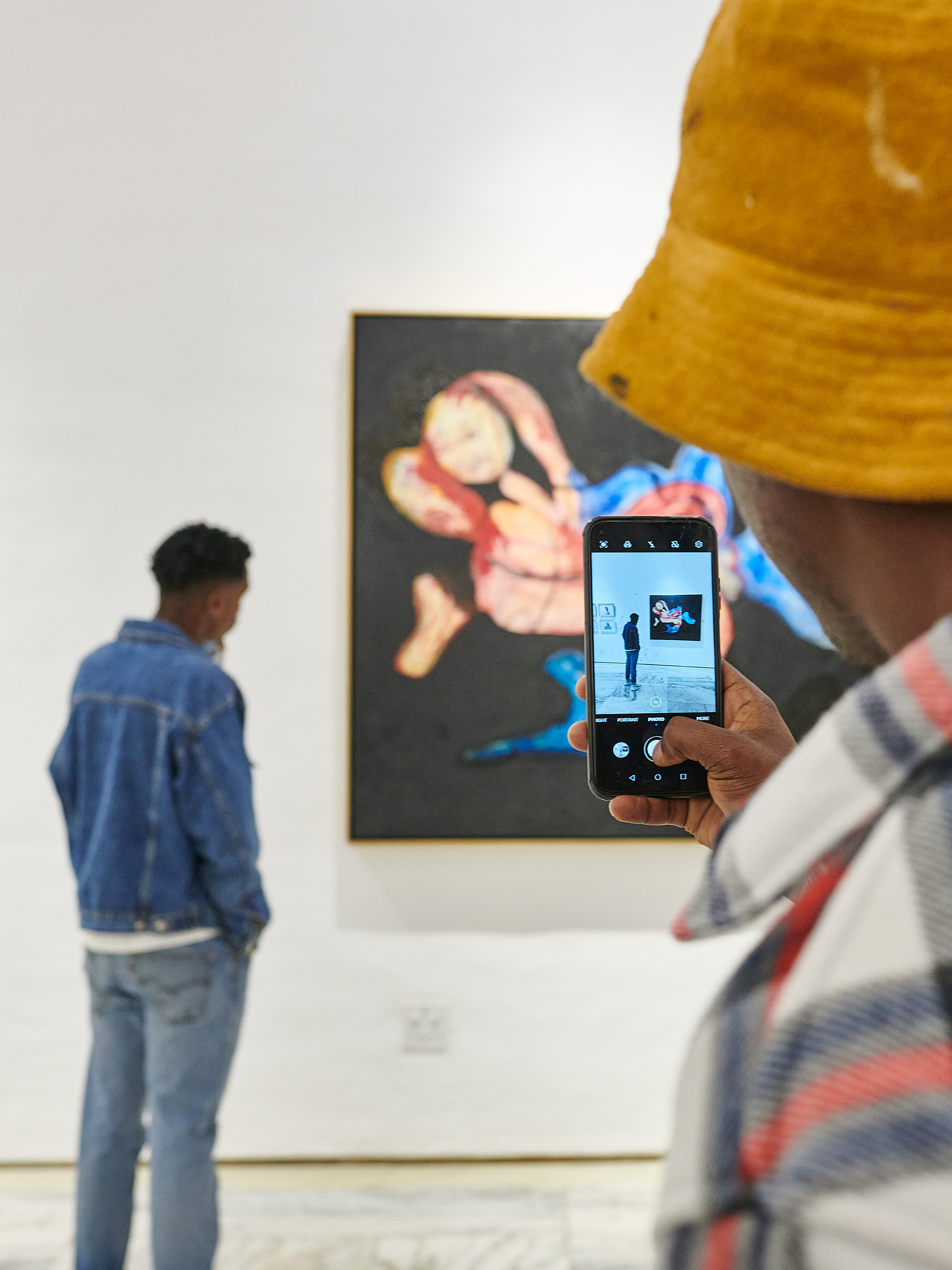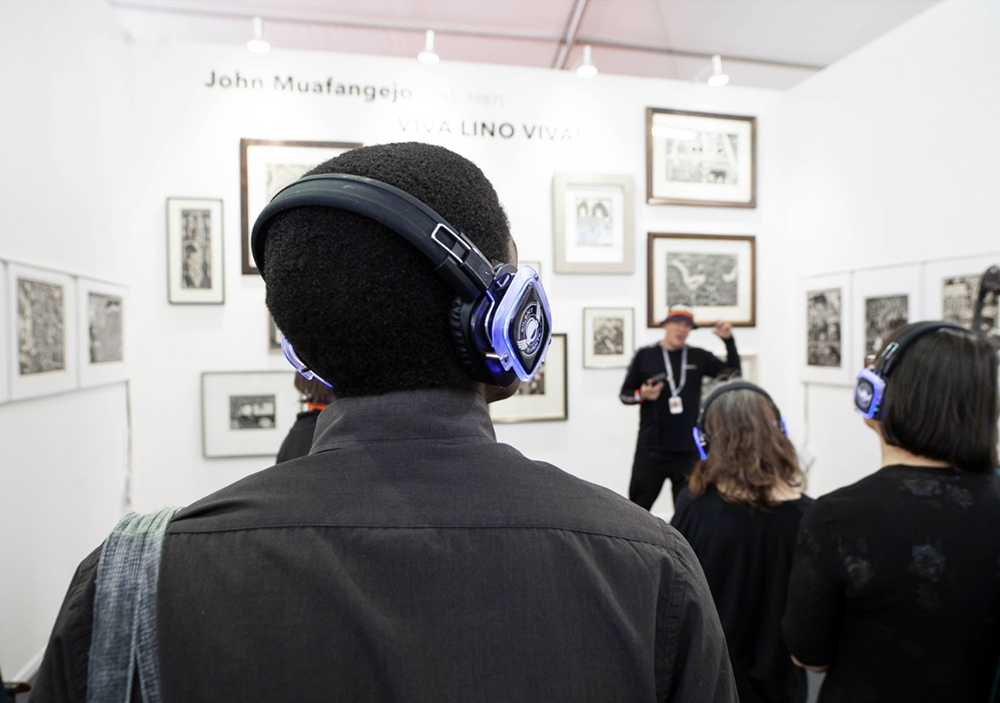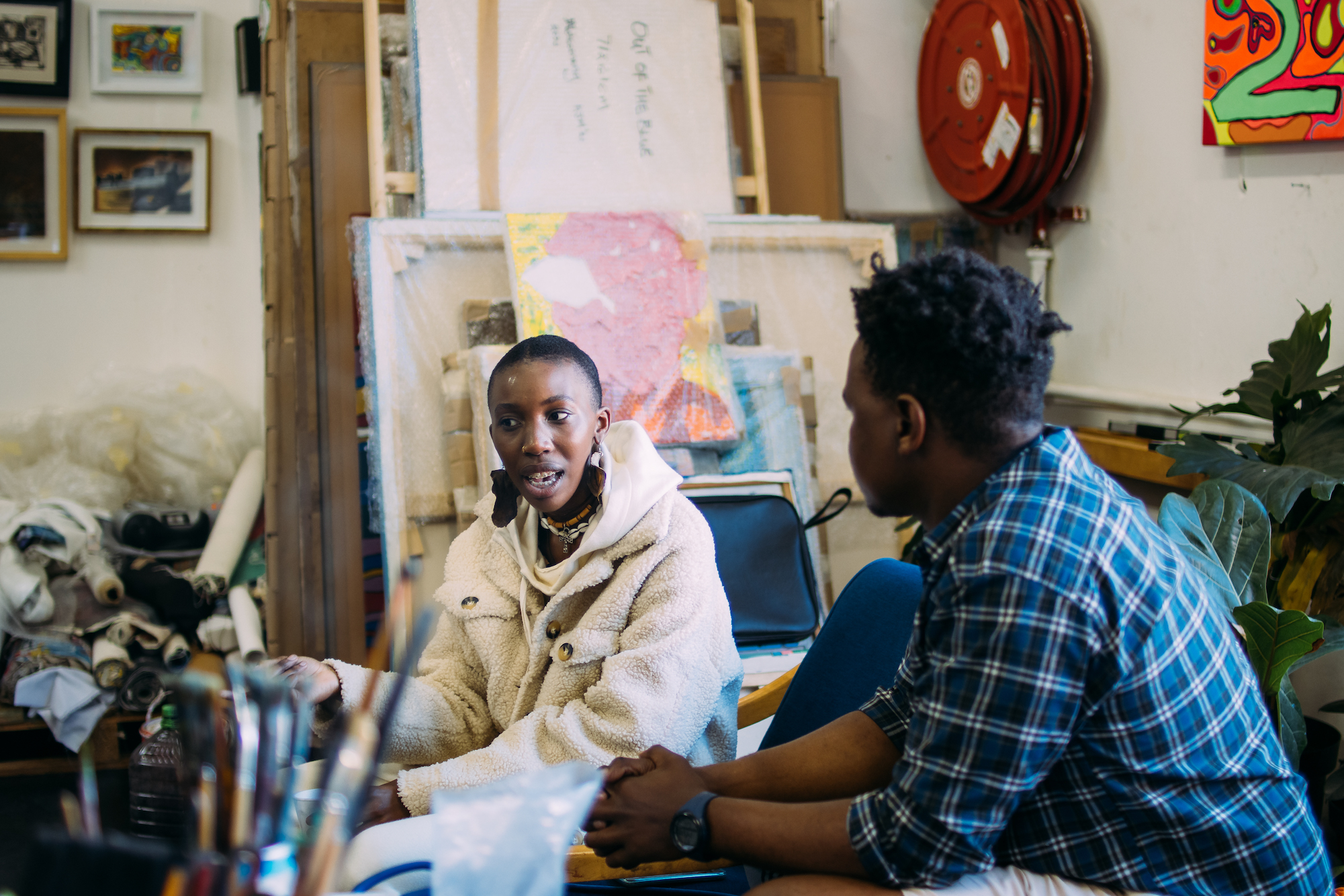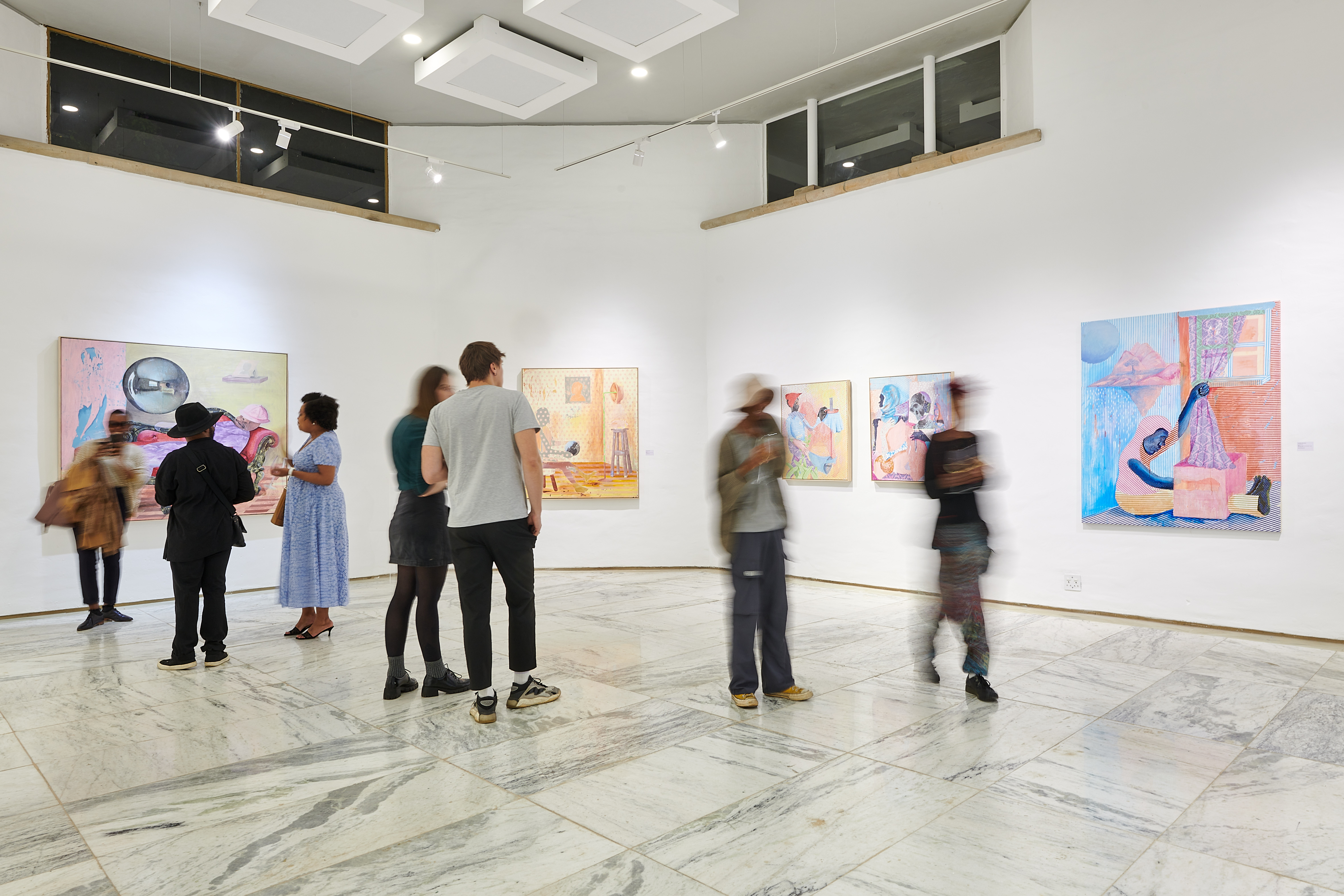Getting your art out there: a multi-faceted guide
- By Mary Corrigall

All That She Carried exhibition at the Latitudes Centre for the Arts, photography by Anthea Pokroy
------------
As an artist, it can be easy to get lost in your own world and overlook the importance of connecting with others. But promoting your art and drawing attention to what is special about it, is almost as important as creating it. Just think of William Kentridge; he is the most well-known artist yet he is always out and about in Joburg in his characteristic outfit talking about his art. Crafting a visual signature is only one piece of the puzzle as no one is going to register that you have evolved a signature unless they are repeatedly confronted with it. By sharing your work with the world, you can increase your profile, reach new audiences, and ultimately sell more art at higher values.
Indeed, in this digitised world we inhabit, we have all been forced to cultivate a public 'brand' and artists cannot escape this reality. Even if an artist is represented by a gallery. Galleries rarely have the time to promote an artist's work and profile outside of solo exhibitions and they sometimes don't have a refined grasp on what is unique about an artist's practice. Independent artists have to work even harder at marketing themselves as they often can't rely on art fairs - which have since the collapse of the traditional print media become a vital platform to market artists.
Promoting an artist's practice is not limited to posting regularly on Instagram. Like all communication campaigns, those for artists ought to encompass a multi-pronged approach that sees a combination of digital, art-related and networking strategies.
Digital Marketing
Website
In today's digital age, having a strong online presence is essential. A well-designed website that is image-centric is vital. You will need to have the following pages;
1) Bio and CV are typically a combined page. Your bio details where you were born, studied and how you came to be an artist, what motivated you to make art and the mediums you work with. A CV is a factual point-by-point chronological breakdown of all the exhibitions, group exhibitions, awards, residencies and art-related projects you have participated in.
2) Statement: This is a short text (no longer than 750 words) that should encapsulate your interests and influences and your development as an artist. This text needs to be accessible. Give it to a non-art-world person to test this. Commission a writer you trust to create this text if writing is not in your skillset.
3) Exhibitions: This is usually a drop-down menu with titles of each exhibition leading to a page of works. This is an excellent way for collectors and other interested parties to review each work in the context in which was conceived and exhibited. As such the artist statement for each show should be displayed with each exhibition. If you are starting out and can't justify an 'exhibitions' the page, it could be labelled "artworks" and a carousel can lead the viewer through individual pieces. You can have a discreet 'enquire' button below the works you would like to sell. It is not recommendable to display prices, as they would inhibit adjustments you might like to make to them over time and in line with shifting circumstances.
4) Texts/Press: this is where artists usually archive any articles on their works or exhibitions. These are important to have; as they connect collectors, and art dealers to your practice through someone else's lens. Commission texts in the absence of these.
 Latitudes Art Fair 2019
Latitudes Art Fair 2019
Newsletters
Newsletters are a great way to keep in touch with collectors, supporters, curators and other significant art professionals. They don't have to be regular - rather wait until you have several exciting developments to share and as always make sure you have some good-quality images that drive home the visual impact of your art. Creating or building a database for your newsletter can be driven through your Instagram account with a link in your bio for potential subscribers. Send it out to curators, writers, art dealers and interior decorators.
Instagram has single-handedly unshackled artists from the gallery system, facilitating them to connect directly and sell to collectors. However liberating this might be for artists, this has forced them to deal with clients and price their own work. This means artists need to be more in tune with pricing in the market and adjust it to meet market demands. Finding a balance in prices that keep your art within the reach of locals but aren't too cheap for international collectors in the West is important. Due to these demands, many artists have hired managers to deal with all the admin this requires.
It is more beneficial to view your Instagram account as a professional space and limit sharing selfies and snapshots from nights out. It's good to add some personal colour from time to time, but make sure it is more likely to endear people to your work. Aside from images of your art, you can share images relating to your resources, research, other forms of inspiration and the behind-the-scenes work that goes into making your art.
Artists tend not to exploit the captions section of Instagram which is a pity as it is a space where you can help connect people to what it is you do. With so many AI-writing tools available, you can produce some clean and accessible texts. However, make sure it is in your 'voice' and that this 'voice' is consistent.
Youtube/TikTok
There is probably research out there that confirms that people nowadays prefer to receive information through films rather than have to read. With the addition of emotive music, a film showing you making art with some prize soundbites is an extremely effective tool in connecting people to your art. I prefer nice long documentary-style clips, but research shows people have short attention spans and prefer short ones. For Youtube you have to drive your audience to your clip, unless they go looking for you and with TikTok, you are more likely to be found, however, you then have another hungry social-media account to sustain.
IRL activities
Group exhibitions
Whether an artist has just graduated or they are an established mid-career one, regularly showing your work is important. This is the most important marketing tool. Naturally, this relies on forging or securing a or several relationships with galleries. In the absence of representation that might secure a solo once a year and a group show in between, artists need to get their works onto as many group shows as possible. You don't need to be too precious about where and which show, as the impact of your art will shine out in any context and you never know who might be in attendance. Showing in both of SA's art capitals - Joburg and Cape Town - should be a goal - do a little research to see what kind of works are finding traction in those cities as there are regional differences in terms of content, and medium.
Engaging with independent curators - though they are few and far between is another avenue for artists to explore, in securing a space on a group exhibition or other projects at commercial events.
Entering competitions is another route to being included in an exhibition (usually finalists get a chance to exhibit). And naturally, if you win, your art claims some visibility.
 OpenStudios.Joburg. Photo by: Sara Hallatt, courtesy of META foundation
OpenStudios.Joburg. Photo by: Sara Hallatt, courtesy of META foundation
Solo exhibitions
Several galleries rent space out to artists - the AVA, Nel, and Spin Gallery (all in Cape Town) - who are looking to stage a solo exhibition. It is possible to rent out a space and stage a pop-up exhibition, but then you have to drive audiences to it. Unless you have an established database this will be time-consuming.
Auctions
Donating works to charity fundraisers or offering works to an auction house also keeps your art circulating. As auction houses run more sales, some of which are online ones only, contemporary artists can get a foot in, where previously only works by celebrated artists were up for sale. Of course, if your work doesn't sell or goes for a low amount, this could be self-defeating. Ultimately, the more often your art is seen, the more interest it generates.
Studio visits
Participating in an organised 'open studios' event or opening your studio to the public is one of the most effective ways to market art. The public loves nothing more than to step into these seemingly hallowed spaces, where art is made. Similarly, hearing an artist speak about their work - the motivation or process - connects people to their art in the most meaningful and impactful way.
Talking about your art
In line with the above artists, regardless of their level of introversion, or reluctance to 'explain their art' should work on crafting and perfecting some good banter about their art. This doesn't have to involve offering explanations or undercutting the mystique connected to it, but rather helping people to connect to why you make art or even why you don't know why you make art and that's why you make art!
 Phumulani Ntuli's Kunanela iphuzu emafini / Echoes of the Point Cloud, opening night at Latitudes Centre for the Arts, photography by Anthea Pokroy
Phumulani Ntuli's Kunanela iphuzu emafini / Echoes of the Point Cloud, opening night at Latitudes Centre for the Arts, photography by Anthea Pokroy
- Corrigall is a Cape Town based commentator, curator and consultant
Further Reading In Articles
African Artist Directory















